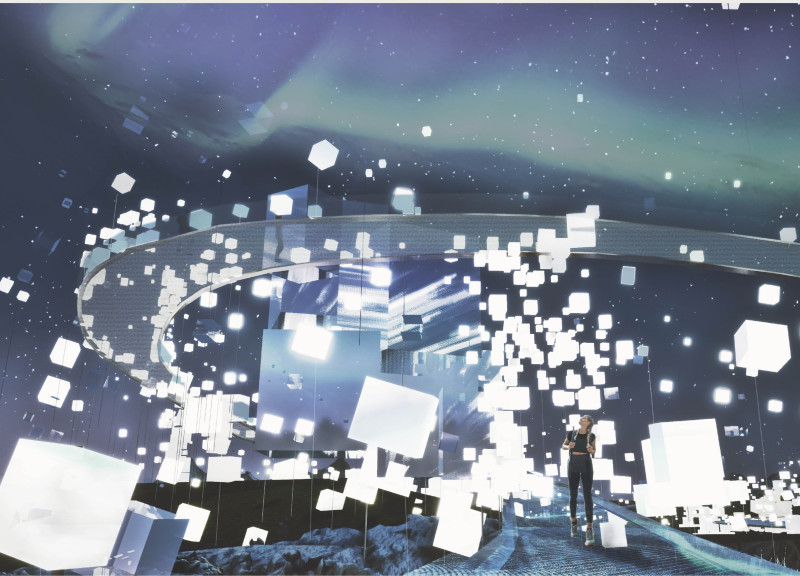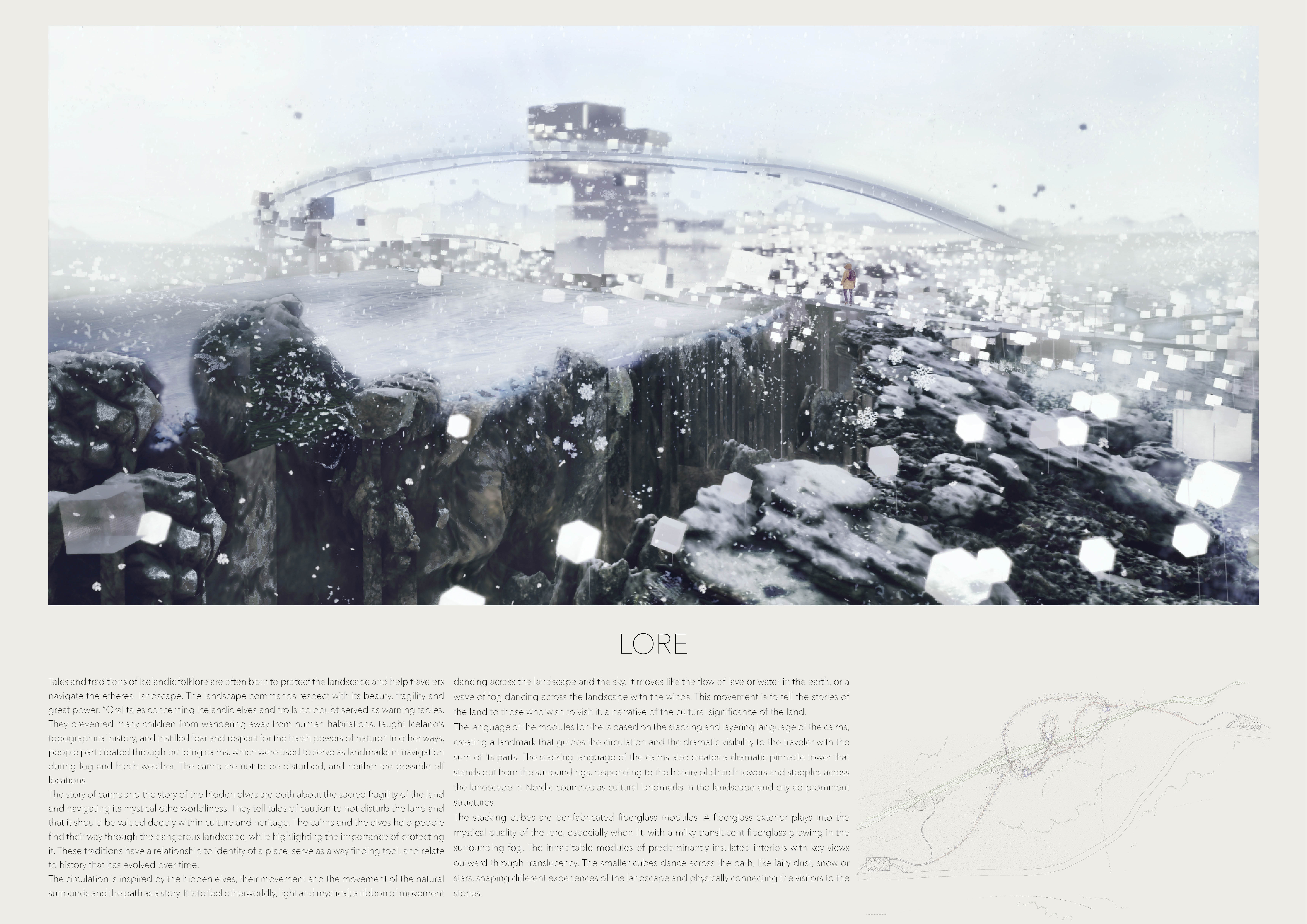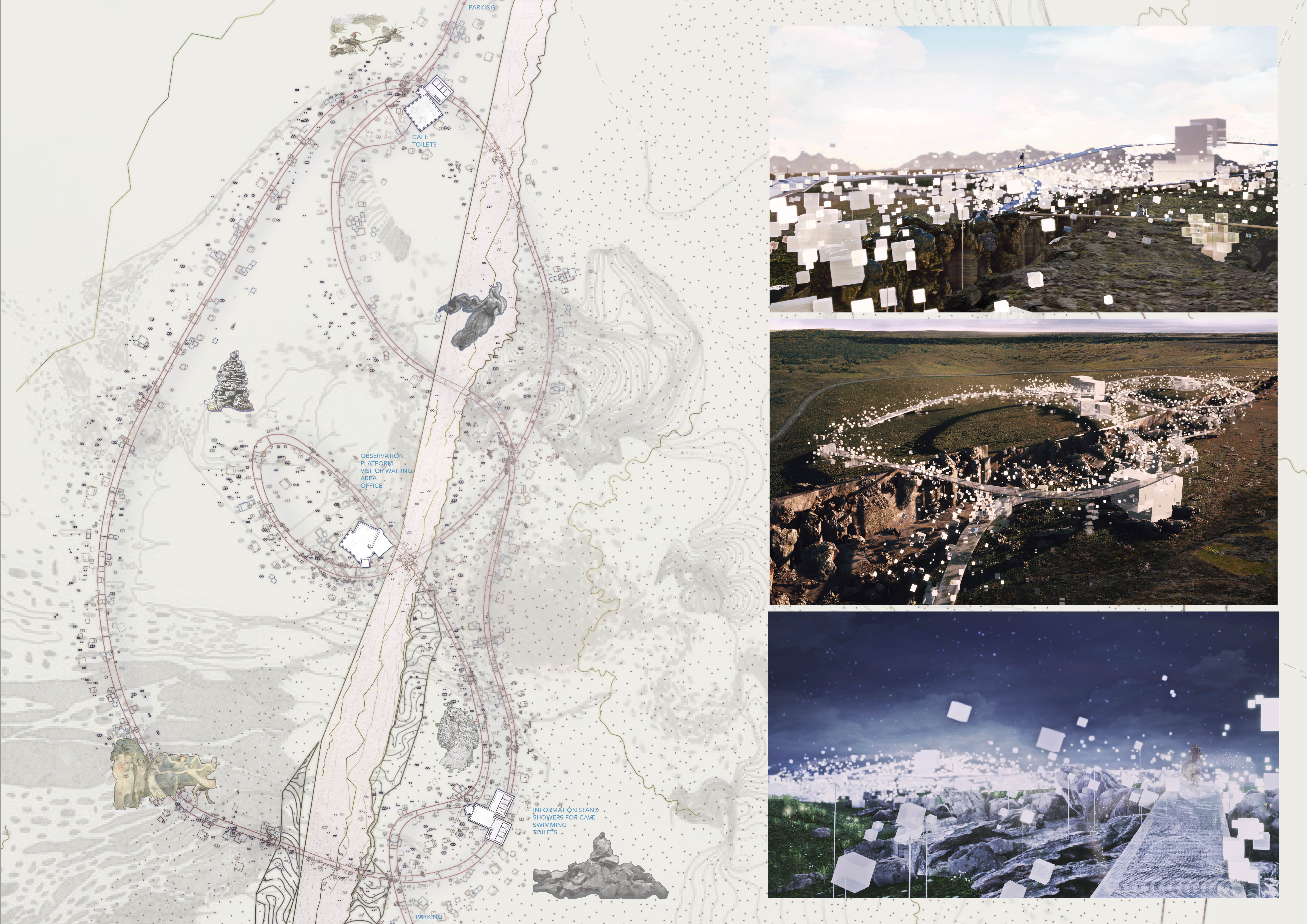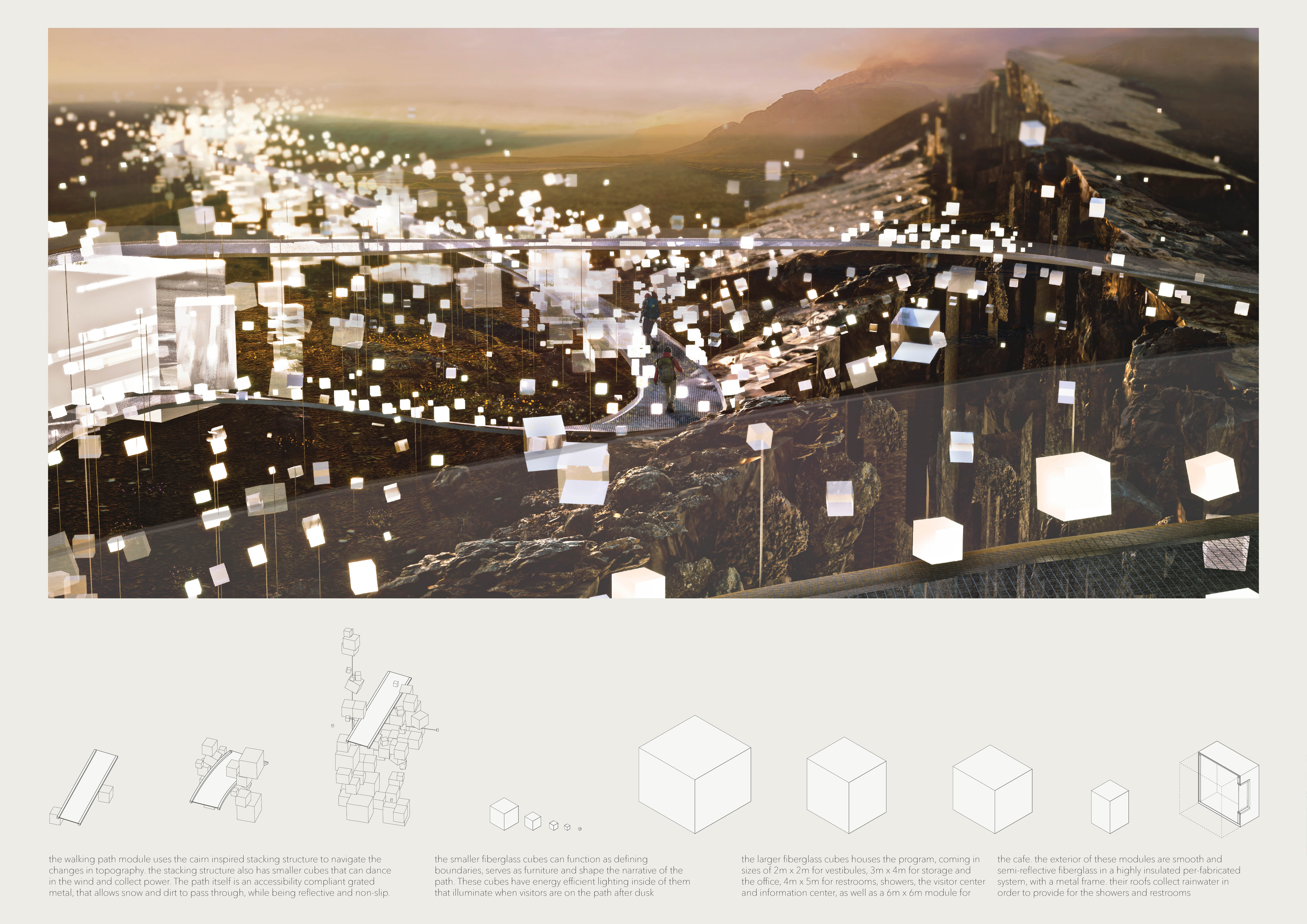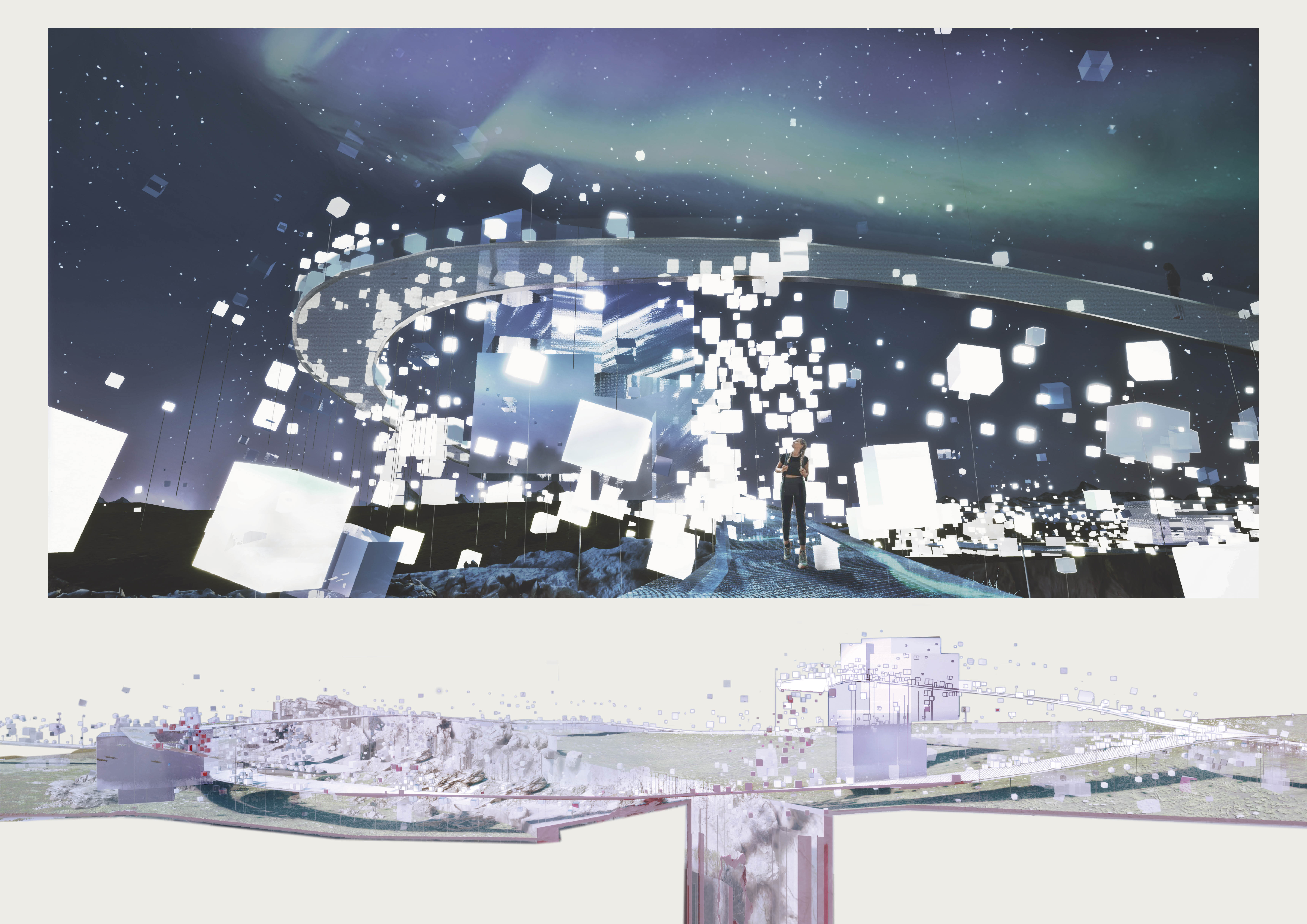5 key facts about this project
The design embraces a path-centric organization that invites movement and engagement. Key components include various observation points that provide panoramic views, and dynamic pathways that integrate seamlessly with the natural topography of the site. This design strategy is intentionally focused on creating an immersive experience where each step encourages users to reflect on their relationship with the landscape.
The project incorporates an array of materials that highlight its commitment to sustainability and local context. The use of fiber-reinforced glass in modular structures enhances transparency, enabling light to permeate living spaces while providing thermal efficiency. Weather-resistant metal serves as a framework for the pathways, ensuring structural integrity across varying climatic conditions. Additionally, locally sourced natural stone is used within the pathway design, reinforcing the connection to the geological characteristics of the area.
The unique aspect of "LORE" lies in its method of integrating storytelling into the architectural experience. Each modular element along the path is designed to evoke themes of memory and history, inviting visitors to engage with the site on multiple levels. Interactive installations, known as "glass cubes," serve as both rest areas and viewpoints, combining functionality with aesthetic appeal. The lighting strategies are thoughtfully incorporated, providing subtle illumination that enhances evening navigation without disrupting the natural ambiance.
The architectural design of "LORE" fosters a dialogue between the built and natural environment, emphasizing the importance of ecologically sensitive design. By prioritizing local materials and minimizing environmental disruption, the project sets a precedent for sustainable architecture that respects the existing landscape.
For further insights into the architectural ideas, plans, sections, and overall design process, readers are encouraged to explore the comprehensive project presentation.


